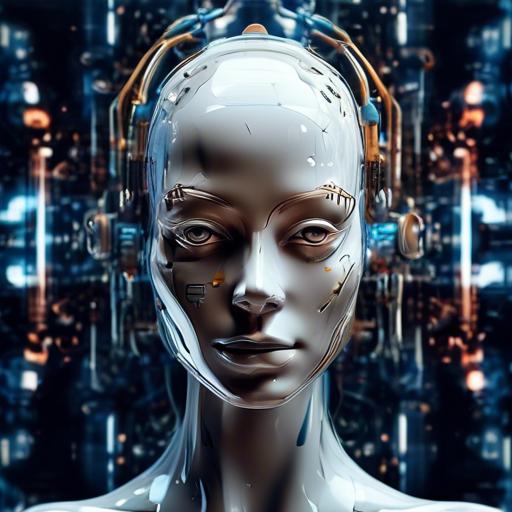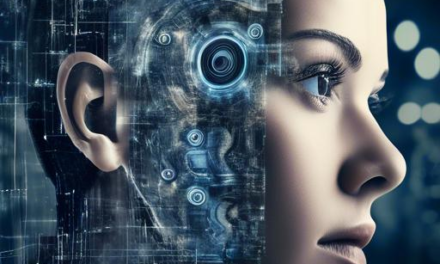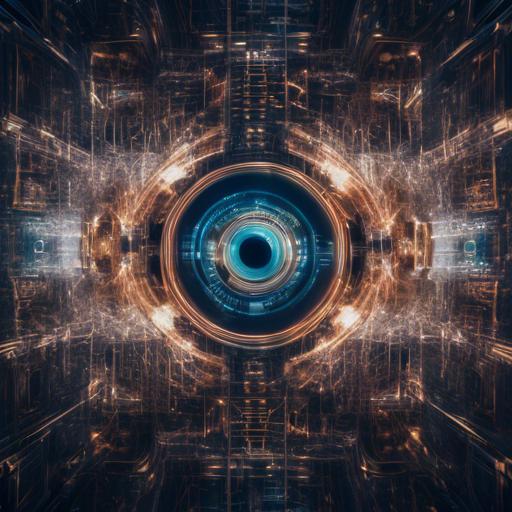In a world where pixels paint possibilities and algorithms sculpt the unseen, both AI image generation and CGI (Computer-Generated Imagery) stand as beacons of technological artistry. While they share a common goal—bringing imagination to vivid life—their journeys diverge in fascinating ways. AI, with its deep learning intricacies, breathes autonomous creativity into images, whereas CGI, a stalwart of visual effects, relies on meticulous craftsmanship by skilled artists. But what sets these two titans of digital image creation apart? Join us as we unravel the intricate threads of innovation, exploring the unique strengths and mystique that make AI image generation and CGI distinct realms of digital magic. Together, we’ll embark on a supportive voyage of discovery, celebrating the marvels each medium offers and the doors they open to boundless creativity.
Table of Contents
- Understanding the Basics: What Sets AI Image Generation Apart from CGI
- Technological Foundations: Algorithms vs. Manual Creation
- Data-Driven Artistry: How Big Data Affects Visual Output
- Speed and Efficiency: Comparing Production Timelines
- Creative Flexibility: The Role of Human Intervention
- Quality and Realism: Assessing Visual Integrities and Limitations
- Cost Implications: Budget-Friendly or Breaking the Bank
- Practical Applications: Industries Thriving with AI and CGI
- In Summary
Understanding the Basics: What Sets AI Image Generation Apart from CGI
When it comes to **image generation** in today’s digital landscape, two dominant technologies often discussed are AI Image Generation and CGI (Computer-Generated Imagery). Both methods are groundbreaking, but they fundamentally differ in their approach and execution.
**AI Image Generation** relies on deep learning algorithms and neural networks to produce images. It learns from vast datasets, identifying patterns and features to create new visuals. This is akin to teaching a machine to “dream” new images based on its understanding. On the other hand, CGI involves manually creating images through sophisticated software, often requiring a high level of artistic and technical expertise. It involves the painstaking process of model creation, texture mapping, lighting, and animation.
Let’s break down some of the key differences:
- Data Dependency: AI needs substantial datasets to learn and generate images, while CGI doesn’t rely on existing data but rather on the creative prowess of its designers.
- Design Control: CGI offers complete control over every pixel and element, allowing unparalleled customization. AI, however, may produce unexpected and innovative results based on its training, sometimes surprising even its creators.
- Time and Effort: Creating high-quality CGI can take weeks or even months, depending on complexity. AI Image Generation can produce images in minutes once trained, making it highly efficient.
| Aspect | AI Image Generation | CGI |
|---|---|---|
| Data Dependency | High | Low |
| Creative Control | Medium | High |
| Realism | Abstract/Real | Highly Real |
| Time Efficiency | High | Low |
With these characteristics in mind, it’s clear that each method serves its purpose. While **CGI** is preferred for scenarios requiring meticulous detail and absolute control, **AI Image Generation** shines in settings demanding rapid turnaround and creative experimentation. As technology continues to evolve, the lines between these two techniques may blur, potentially leading to exciting new innovations in visual content creation.
Technological Foundations: Algorithms vs. Manual Creation
Algorithms serve as the backbone of AI image generation, orchestrating the complex dance of pixels and probabilities. These sophisticated mathematical constructs enable AI to learn patterns from vast datasets of existing images, creating unique pieces of art in a process that mimics human creativity. Unlike the manual labor demanded by CGI, where artists meticulously craft each frame, AI algorithms can autonomously generate high-quality visuals with minimal human intervention.
Another crucial distinction lies in **workflow efficiency**. AI image generation leverages deep learning models, such as GANs (Generative Adversarial Networks), which are capable of producing diverse and high-resolution images once trained. This stands in stark contrast to CGI, where artists rely heavily on manual tools and software like Blender or Maya, requiring significant time and expertise.
- Speed: AI can generate images in seconds.
- Scalability: Produce thousands of images with little additional cost.
- Consistency: Maintains a uniform style effortlessly.
Moreover, the **creative potential** of AI is amplified by its ability to explore unconventional patterns that human artists might not envision. While CGI offers unparalleled control over the artistic process, allowing for every minute detail to be tailored, AI image generation thrives on its unpredictability. This capability allows AI to uncover novel aesthetic possibilities, often resulting in unexpected and inspiring artwork that pushes creative boundaries.
Consider the following comparison between AI image generation and traditional CGI:
| Aspect | AI Image Generation | CGI |
|---|---|---|
| Creation Time | Seconds to minutes | Hours to days |
| Expertise Required | Low (after setup) | High |
| Flexibility | Algorithm-dependent | User-dependent |
| Cost Efficiency | High (scalable) | Variable |
In essence, while both AI image generation and CGI have their own unique strengths and applications, they represent two distinct paradigms in digital art creation. AI’s algorithmic capabilities offer a level of speed and scalability that is difficult to match, whereas the manual craftsmanship of CGI provides unparalleled control and precision. By understanding these differences, artists and creators can better harness the strengths of each method to realize their individual visions.
Data-Driven Artistry: How Big Data Affects Visual Output
In an era where technology is reshaping creativity, **data-driven artistry** is at the forefront, blurring the lines between human imagination and machine capability. The impact of **big data** on visual output is profound, influencing how artists, designers, and developers approach their craft. With the prolific rise of **AI in image generation**, artists are not merely creating from scratch but are curating, guiding, and augmenting their visions with the help of immense data sets.
**AI-generated images** leverage vast amounts of data to understand styles, patterns, and contexts, producing outputs that are both innovative and rooted in existing visual knowledge. These intelligent systems analyze millions of images to understand the intricacies of human perception, offering tools that can assist artists in generating visually stunning art that aligns with contemporary trends and tastes. This process is less about direct creation and more about facilitating a creative dialogue between the artist and the machine. Meanwhile, **CGI (Computer-Generated Imagery)** relies on meticulously detailed programming and manual input, often requiring exhaustive rendering processes and frame-by-frame adjustments, making it a labor-intensive endeavor.
The convergence of these technologies has enabled a new paradigm in visual artistry. Here are some of the ways **big data** influences visual outputs in AI image generation compared to traditional CGI:
- Pattern Recognition: AI can analyze complex patterns across large datasets to produce images that are surreal yet coherent.
- Data-Driven Stylization: Artists can utilize AI to replicate and blend various artistic styles based on historical art data.
- Real-Time Adjustments: AI allows for instant modifications, whereas CGI often requires time-consuming recompilations.
- Resource Efficiency: AI-generated imagery can be less resource-intensive, leveraging pre-trained models, contrasting CGI’s need for high-performance hardware.
- Scalability: With big data, AI can generate a vast array of unique images quickly, which is not feasible with conventional CGI techniques.
The **data-driven approach** doesn’t just stop at generation; it extends to feedback loops, where created images feed back into the system to refine future outputs. This cyclic enhancement continues to reduce the gap between human creativity and machine efficiency. Embracing these advances can democratize art creation, providing powerful tools to both seasoned artists and novices alike, fostering a more inclusive art ecosystem.
| Feature | AI Image Generation | CGI |
| Data Dependency | High | Low |
| Generation Speed | Fast | Slow |
| Resource Requirement | Efficient | High |
| Artistic Control | Collaborative | Manual |
| Scalability | High | Limited |
Ultimately, the intersection of **big data and artistry** heralds a transformational shift in visual output methodologies. By leveraging advanced algorithms and extensive datasets, today’s artists can transcend traditional limitations, crafting images that are not only visually captivating but also culturally resonant. This evolution represents a significant democratization of artistic creation, unlocking new avenues for exploration and expression.
Speed and Efficiency: Comparing Production Timelines
When it comes to rapid production timelines, AI image generation often leaves CGI (Computer Generated Imagery) in the dust. One of the standout advantages of AI-driven processes is the speed with which they can produce highly detailed images. Unlike traditional CGI, which requires meticulous manual input and extensive rendering times, AI can generate images in a matter of seconds.
Key Differences in Production Speed:
- AI Image Generation: Leveraging vast datasets, AI models can create complex visuals almost instantaneously.
- CGI: Involves multiple stages – modeling, texturing, lighting, and rendering – each requiring significant time and effort.
AI does not just expedite the creation process; it also enhances efficiency. With tools like neural networks and advanced algorithms, AI streamlines workflows that would otherwise be strenuous and time-consuming. Animators and artists can focus more on creative ideation rather than getting bogged down by technical aspects.
| Aspect | AI Image Generation | CGI |
|---|---|---|
| Time to Create Single Image | Seconds | Hours |
| Required Skills | Data Science, Basic Art Direction | 3D Modeling, Texturing, Lighting |
| Flexibility | High (Can Learn and Adapt) | Moderate (Manual Adjustments Needed) |
This efficiency boost does not come at the expense of quality. AI-generated images can rival, and sometimes surpass, the visual fidelity of traditional CGI. Advanced AI systems can learn specific artistic styles, making it possible to generate stunning imagery that meets or exceeds client expectations in record time. This contributes to faster project turnarounds and allows for quick iterations and revisions, which is invaluable in fast-paced industries.
In essence, the shift from CGI to AI image generation transforms the production landscape. By embracing AI, creators not only speed up their timelines but also ensure a more efficient, flexible, and adaptable workflow. The result is a dynamic and responsive production process that can keep up with the ever-increasing demands of modern, visually-driven media.
Creative Flexibility: The Role of Human Intervention
When it comes to creating visual content, the human touch plays a critical role in both AI-generated images and traditional CGI. However, the extent and nature of this intervention vary significantly between the two approaches. While AI offers remarkable **automation and speed**, it is the flexibility of human intervention that transforms mere pixels into breathtaking works of art.
In AI image generation, the human role typically revolves around training the neural network, curating data sets, and refining outputs. The artist can feed the AI specific parameters and guidance, but the generation process largely remains **algorithmic and data-driven**. This can sometimes result in outputs that are technically sound but lack the imaginative spark that makes visual content truly compelling.
In contrast, traditional CGI allows for a greater degree of creative intervention at every stage of the production process. CGI artists can manipulate every aspect of the image, from the texture of a tree’s bark to the nuances of facial expressions. The granular control offered by CGI enables artists to infuse their work with **personal flair** and **emotional depth**, something that’s challenging to achieve with AI.
- Control: In CGI, artists have full authority over object details and environmental contexts.
- Speed: AI-generated images can be produced much faster, but may need significant post-editing.
- Uniqueness: Human intervention in CGI leads to more unique and personalized creations.
| Aspect | AI Image Generation | CGI |
|---|---|---|
| Process | Automated | Manual |
| Flexibility | Limited | High |
| Time Efficiency | High | Variable |
| Creative Control | Algorithmic | Human-Centric |
Thus, while AI may augment the capabilities of artists by offering rapid prototypes and variations, it is the nuanced, human-led decisions in CGI that often make all the difference. From adjusting lighting and rendering to inserting subtle details that machines might overlook, the **artistic vision** is paramount. These interventions elevate digital art, turning technology-mediated processes into compelling visual narratives.
Quality and Realism: Assessing Visual Integrities and Limitations
When evaluating the **quality** and **realism** of AI-generated images compared to CGI, several key factors emerge. AI-created visuals often leverage immense datasets to create highly detailed images that mimic real-world textures and lighting. However, the realistic appearance of these images can sometimes be superficial, as AI-generated content occasionally struggles with context and continuity.
AI image generation typically excels in replicating textures and fine details, making it exceptional for single-frame outputs. For instance:
- **Textures:** AI-generated images capture the nuances of materials such as leather, cloth, and metal with impressive accuracy.
- **Details:** High fidelity in human features, for instance, can be achieved, making portraits look almost lifelike.
| Aspect | AI Image Generation | CGI |
|---|---|---|
| Texture Detail | High | Variable |
| Lighting Realism | Authentic | Controlled |
| Context Awareness | Low | High |
Conversely, CGI, or Computer-Generated Imagery, thrives in maintaining **context** and **continuity** within complex scenes. Although the generation process requires more time and expertise, CGI allows for full control over each element in the frame. This is particularly evident in scenarios requiring interaction between objects or characters, where attention to physical laws and realistic behavior is crucial.
**Context Awareness** is a significant limitation for AI-generated imagery. AI might produce visually stunning results, but without an understanding of the broader scene, inconsistencies can arise. CGI, however, designs each frame with an intentional narrative, ensuring all elements cohesively interact.
The choice between AI-generated images and CGI depends on the needs of the project. For visually rich yet static scenes, AI can be a powerful tool. However, for dynamic, interactive, and context-rich environments, CGI remains the gold standard due to its comprehensive control and adaptability.
Cost Implications: Budget-Friendly or Breaking the Bank
Dipping into the financial side of AI image generation and CGI reveals stark contrasts. AI image generation typically leverages pre-existing neural networks and cloud-based platforms. As a result, **entry costs can be remarkably low**. Individuals or startups can experiment with AI tools without a heavy initial investment. On the flip side, CGI often demands substantial resources upfront, including high-performance hardware, specialized software licenses, and skilled professionals.
The cost factors for each encompass various elements:
- Hardware: AI image creators can often rely on average computing power, while CGI artists require powerful workstations.
- Software: AI tools are frequently available through affordable subscription models, whereas CGI software packages can be expensive.
- Labor: AI-based design is more accessible for non-experts, whereas successful CGI necessitates hiring skilled artists and technicians.
Considering ongoing expenses, AI image generation remains relatively frugal. The maintenance primarily involves subscription costs and minimal upgrades, keeping business operations lean. However, CGI demands continuous investment in elevating software capabilities, hardware durability, and human capital.
| Cost Factor | AI Image Generation | CGI |
|---|---|---|
| Hardware | Moderate | High |
| Software | Subscription-based | High |
| Labor | Low | High |
**Scaling** is another dimension where AI scores high. Expanding an AI workflow to handle more projects or iterations often requires upgrading storage or computational power. Conversely, scaling a CGI production pipeline involves multiplying both the hardware and skilled workforce, significantly escalating costs.
Ultimately, for small businesses, indie creators, or startups seeking innovative visuals on a tight budget, AI image generation offers an **attractive, cost-effective solution**. CGI remains a favored choice for larger enterprises with the cushion of more substantial budgets and time to invest in creating visually stunning and hyper-realistic imagery.
Practical Applications: Industries Thriving with AI and CGI
AI image generation and CGI (Computer-Generated Imagery) are revolutionizing multiple sectors, elevating the standards of creativity and efficiency. Here’s a look at some industries that are thriving with these technologies:
- Entertainment: Movie and gaming industries leverage CGI to create breathtaking visual effects and lifelike characters. AI image generation complements this by offering faster, more efficient ways to design intricate scenes and enhance animation.
- Healthcare: Medical imaging sees a substantial upgrade as AI-driven models help in creating detailed scans. CGI aids in constructing 3D anatomical models for better diagnosis and surgical planning.
- Marketing: Brands use AI to generate high-quality images for advertising, bypassing lengthy photoshoots. CGI assists in creating immersive product visualizations that captivate potential buyers.
- Automotive: Car manufacturers utilize CGI to craft stunning visuals of new models, while AI algorithms predict and enhance design features. This blend shortens the development cycles and amplifies innovation.
These advances have led to tangible benefits observed through various metrics:
| Industry | Application | Benefit |
|---|---|---|
| Entertainment | Visual effects, character design | Enhanced realism, cost reduction |
| Healthcare | Medical imaging, 3D modeling | Improved diagnostics, better surgical outcomes |
| Marketing | Advertising imagery, product visualization | Increased engagement, shortened production time |
| Automotive | Vehicle design, feature enhancement | Accelerated innovation, reduced time-to-market |
This technology convergence not only transforms industries but also creates new opportunities. Businesses can dream bigger while artists are equipped with more powerful tools to manifest their visions. The scope of what’s achievable keeps expanding, heralding a future where reality itself could become a canvas of infinite possibilities.
In Summary
the world of artificial intelligence and computer-generated imagery are constantly evolving and pushing the boundaries of visual effects. While CGI has long been the gold standard for creating stunning visual representations, AI image generation offers a fresh and innovative approach to creating lifelike images with a fraction of the human effort. By understanding the key differences between the two technologies, we can better appreciate and harness the full potential of AI image generation in unlocking new realms of creativity and imagination. As we continue to explore and experiment with these groundbreaking technologies, the possibilities for creating breathtaking visuals are truly endless. So let’s embrace the future of AI image generation and CGI, and revel in the endless possibilities they bring to the world of visual storytelling.
































